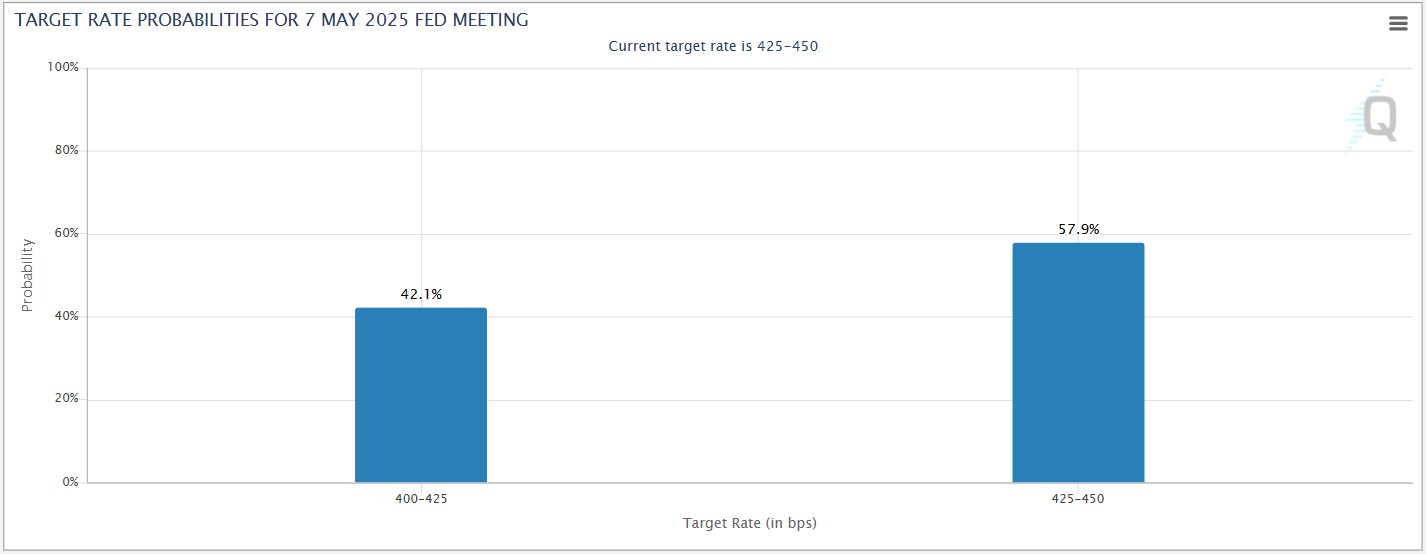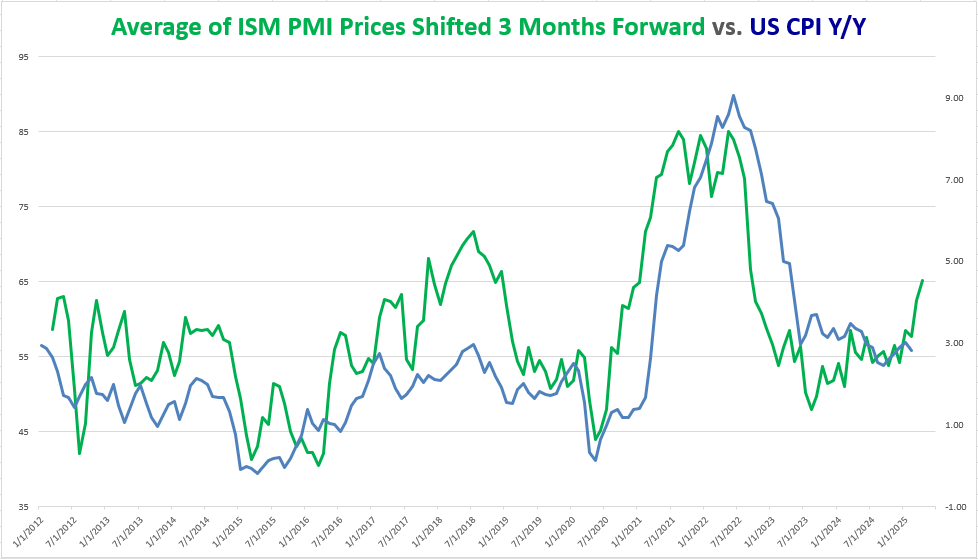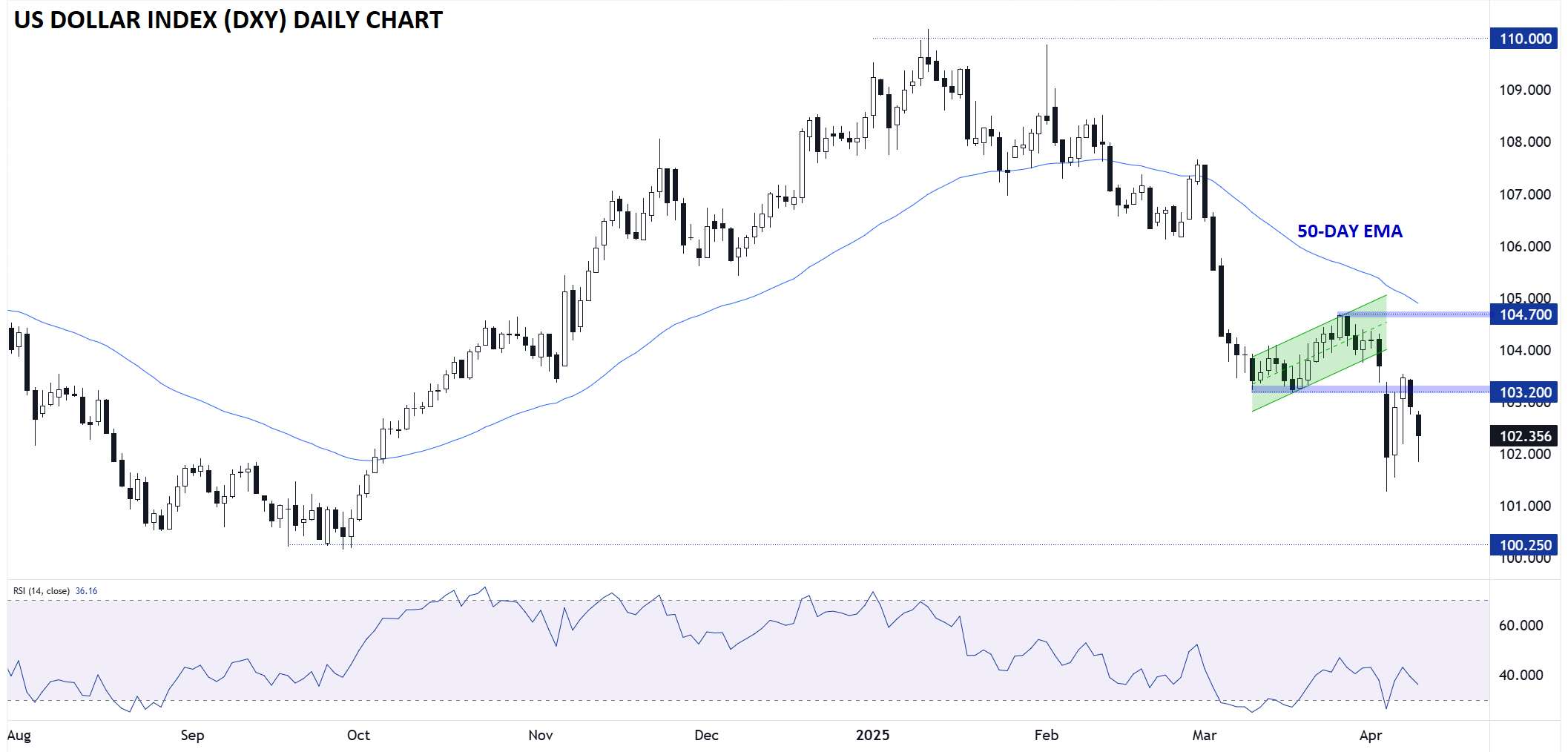US CPI KEY TAKEAWAYS:
- US CPI expectations: 2.8% y/y headline inflation, 3.1% y/y core inflation
- FOMC officials continue to downplay the immediate impact of a potential trade war on the US economy, preferring to emphasize the backward-looking data as a key policy driver, keeping the focus on CPI.
- As long as the US Dollar Index remains below 103.20 the path of least resistance will remain to the downside, with little in the way of major support until the 2024 lows near 100.25.
When is the US CPI report?
The US CPI report for March will be released at 8:30ET (12:30 GMT) on Thursday, April 9.
What are the US CPI Report Expectations?
Traders and economists are projecting headline CPI to come in at 2.8% y/y, with the core (ex-food and -energy) reading expected at 3.1% y/y.
US CPI Forecast
Lest you forget this week's volatility, traditional data on an underlying economy's performance on metrics like inflation and employment was once one of the largest drivers of market volatility.
As of writing, we’re definitively NOT in that type of environment as traders hang on every headline to see how President Trump's mood may change on tariffs. So, the market impact from this month’s CPI report may be more limited as traders view the data as potentially “stale” relative to the upheaval in global trade relationships we’ve seen.
That said, FOMC officials continue to downplay the immediate impact of a potential trade war on the US economy, preferring to emphasize the backward-looking data as a key policy driver. Accordingly, traders are pricing in “only” about a 40% chance of a Fed rate cut in next month’s meeting, despite the recent market volatility:
Source: CME FedWatch
As many readers know, the Fed technically focuses on a different measure of inflation, Core PCE, when setting its policy, but for traders, the CPI report is at least as significant because it’s released weeks earlier. Though CPI has generally ticked higher over the last several months, it remains well below the peak levels seen back in 2022:
Source: TradingView, StoneX
As the chart above shows, the “Prices” component of the PMI reports has accelerated sharply higher over the last couple of months, and that was before the Trump administration’s tariffs were formally announced. Despite signs of slowing economic growth, firms are having to pay up for goods and services amidst the ongoing uncertainty around trade policy, putting upward pressure on the CPI report in the coming months. From a policy perspective, the combination of weak/contracting growth and elevated inflation is the worst possible “stagflation” scenario that can be difficult for the Fed to handle.
As always, the other key component to watch when it comes to US CPI is the so-called “base effect,” or the influence that the reference period (in this case, 12 months) has on the overall figure. Last March’s 0.4% m/m reading will drop out of the annual calculation after this week’s print, opening the door for a decrease in the headline year-over-year CPI reading if the month-over-month reading is less than 0.4%.
US Dollar Index Technical Analysis – DXY Daily Chart
With most of the global trade uncertainty emanating from the world’s largest economy itself, it’s not surprising to see the US dollar falling sharply against its major rivals, even despite the greenback’s reputation as a “safe haven” currency.
From a technical perspective, the US Dollar Index (DXY) remains near 6-month lows and under the key previous-support-turned-resistance level at 103.20. As long as that remains the case, the path of least resistance will remain to the downside, with little in the way of major support until the 2024 lows near 100.25.
Meanwhile, a benign CPI report and progress on reducing tariffs could lead to a rally in the buck, especially with sentiment so dour; in that scenario, a move back above 103.20 could quickly target the confluence of the 1-month high and 50-day EMA near 104.70
